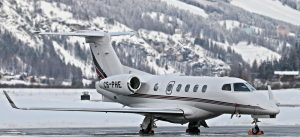
The S-duct is a common type of intake for jet engines. All jet engines require an intake Also known as an inlet, it’s responsible for capturing and slowing down air prior to the air entering the engine’s combustion chamber. While there are different types of jet engine intakes, one of the most common is the S-duct. Like with other types of intakes, though, S-duct intakes offer both advantages and disadvantages.
Pro: Shorter Fin
S-duct intakes allow for shorter fins. Fins are stabilizers. They consist of small wing-shaped flight control surfaces that are designed to improve stability during flight. Airplanes with an S-duct intake don’t need a long fin. Rather, they can be equipped with a short fin.
Pro: Engine Positioning
Another advantage of S-duct intakes is engine positioning. The S-duct was initially developed, in fact, for engine positioning on trijets. Trijets are airplanes that are powered by three jet engines. If an airplane only has two jet engines, it will typically feature one jet engine on each side of its fuselage. Trijets, on the other hand, have an odd number of jet engines, so they require an alternative solution. D-duct intakes allow trijets to feature their third jet engine in the center.
Pro: Easy to Access
S-duct intakes are easier than other types of jet engine intakes. Some trijets, for instance, use a straight-through intake for their respective jet engines. Straight-through intakes are higher up, which makes them difficult to access. S-duct intakes are lower, so maintenance workers and engineers can easily access them.
Pro: Less Drag
Airplanes with an S-duct intake generate less drag than those with a straight-through intake. Some reports suggest that an S-duct intake can reduce drag by up to 4%. And with less drag, airplanes are more efficient. They can fly longer distances while consuming less fuel.
Con: Increased Cost
One of the biggest drawbacks of S-duct intakes is the cost. They cost more to produce and install than most other types of jet engine intakes. The S-duct intake is more complex than the straight-through intake. And with its complex design, it costs more to produce and install
Con: Not Common on Commercial Airplanes
You won’t find S-duct intakes on many commercial airplanes. Most commercial airplanes feature an even number of jet engines. Some of them feature two jet engines, whereas others feature four jet engines. S-duct intakes, conversely, are typically used on trijets, which feature three jet engines.



